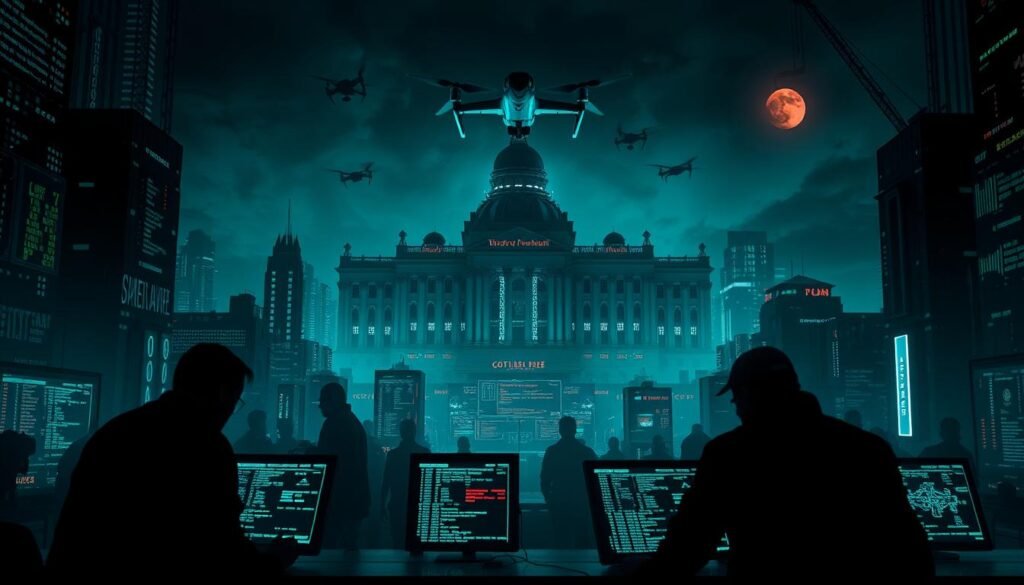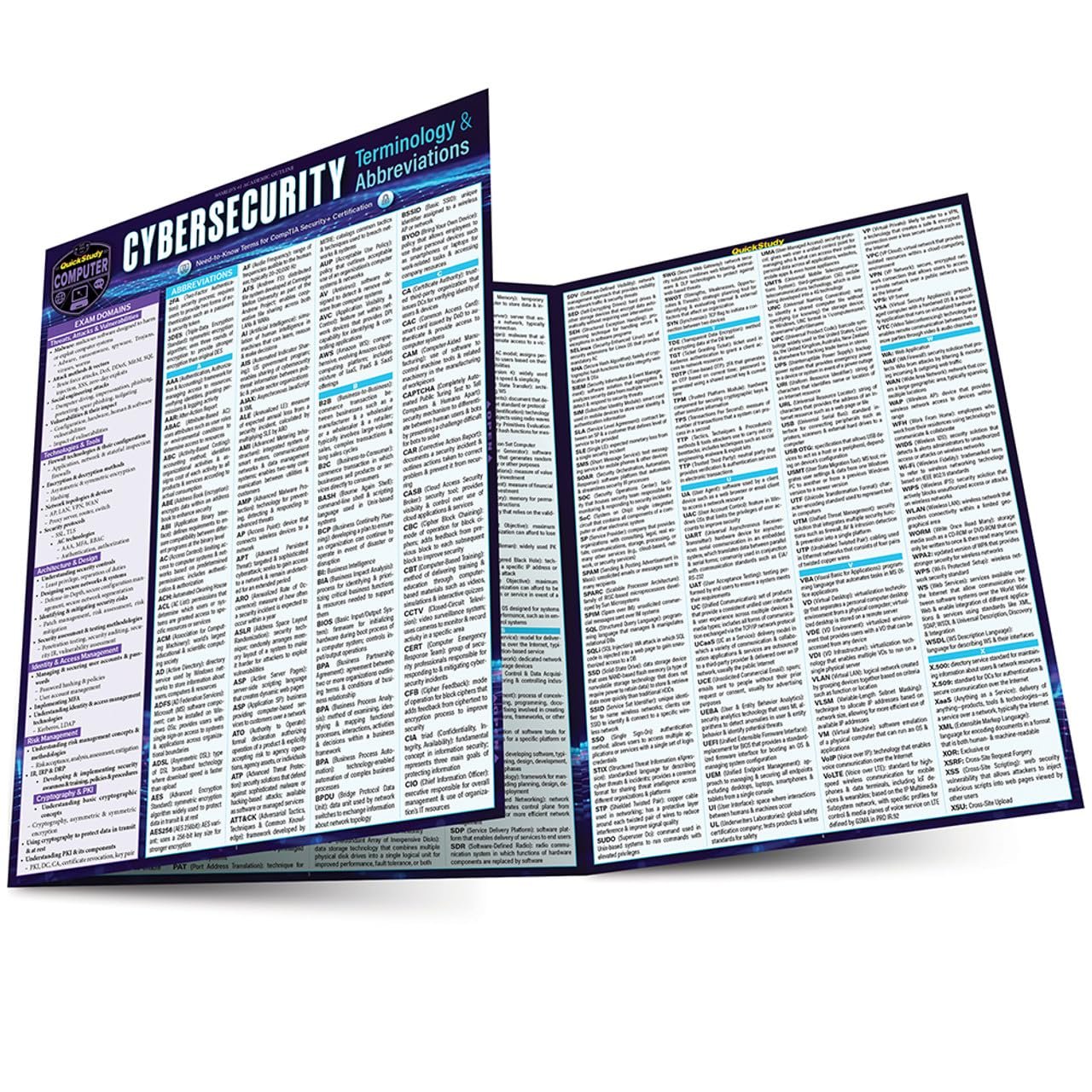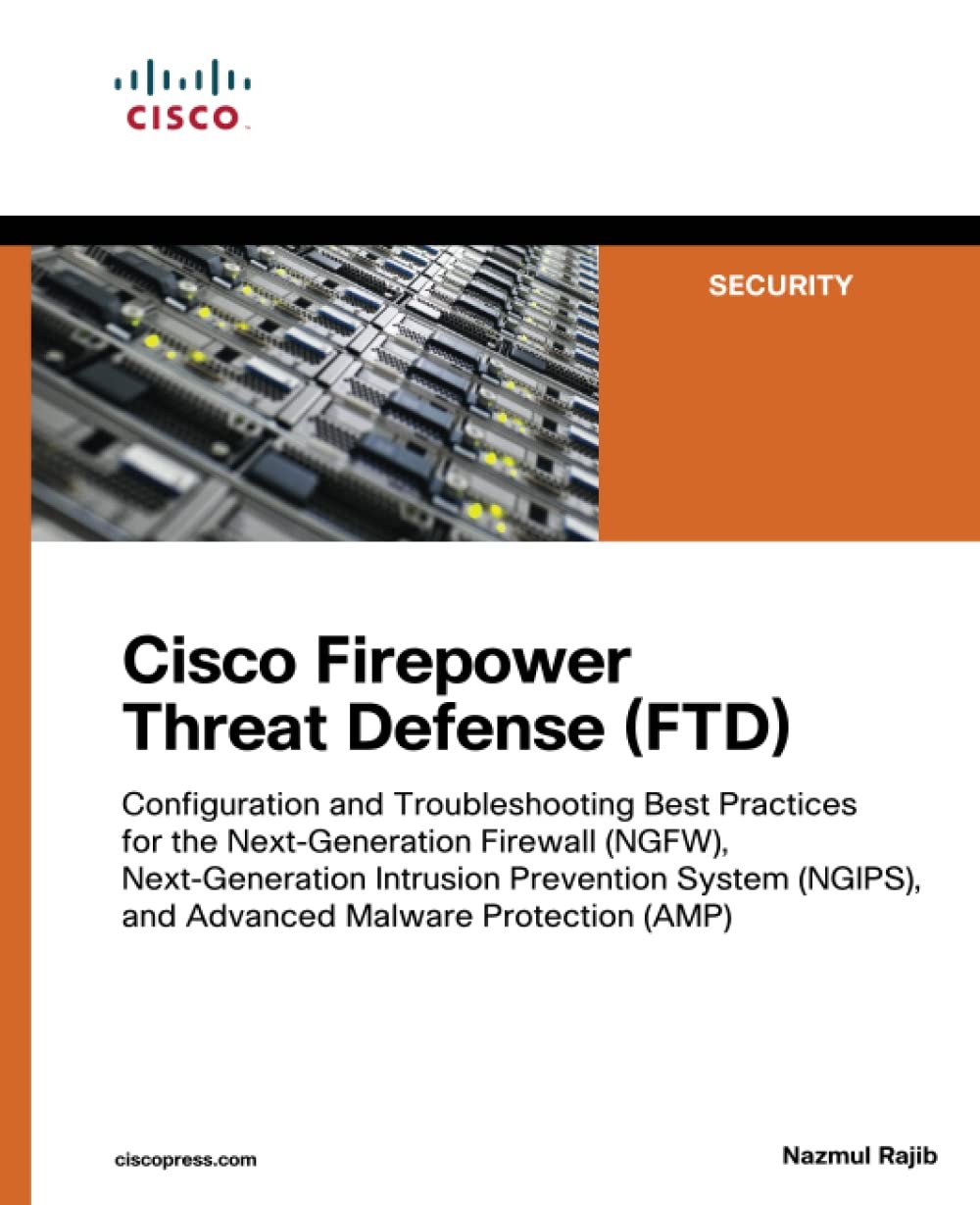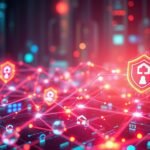Are you ready for the digital battles of 2025? Cybersecurity is now a complex game of strategy, not just tech.
The world of cybersecurity is changing fast in 2025. With a 9.9% jump in cyber attacks, staying ahead is key. Organizations must quickly adapt to new tech challenges.
Artificial intelligence is changing cybersecurity. AI attacks are real and getting smarter. They need smart defenses to stop them.
Your digital world is facing big threats. These threats use new tech and smart attacks. They’re getting harder to beat.
Key Takeaways
- AI will significantly reshape cybersecurity threat landscapes
- Organizations must prioritize adaptive security strategies
- Proactive threat detection becomes a must
- Human expertise remains critical in cybersecurity defense
- Investment in advanced security technologies is essential
Cybersecurity Terminology & Abbreviations: Comptia Security Certification: A QuickStudy Laminated Reference Guide.
- All the essential terminology, abbreviations, and acronyms for cybersecurity you need to know in 6 laminated pages written and designed for quick reference.
The Evolution of AI-Powered Cyber Threats
Artificial intelligence is changing the world of cybersecurity fast. It brings new ways to defend and new challenges to face. As AI gets better, hackers find new ways to attack our digital world.
Advanced Phishing and Social Engineering Attacks
AI is making social engineering attacks smarter. Now, hackers can make phishing emails that look real and get past old security checks. They use AI to:
- Make emails that look like they’re from people you trust
- Study how you talk and email to target you better
- Find out who might be a good target
Deepfake Technologies in Cybercrime
Deepfake crimes are becoming a big problem for companies. AI lets hackers make fake audio and video that looks real. They can:
- Make fake voices or videos of people
- Change what executives say
- Make fake videos or photos
“AI is becoming a double-edged sword in cybersecurity, both helping to defend and being used by attackers.” – Cybersecurity Expert
AI-Enhanced Malware Development
Now, malware is getting smarter thanks to AI. These new threats can:
- Change how they work to avoid being caught
- Get past security checks
- Make new ways to attack on their own
By 2025, 81% of IT professionals will use AI to fight cyber threats. This shows how important AI is in keeping our digital world safe.
Quantum Computing: A Double-Edged Sword in Cybersecurity
Quantum computing is changing the game in cybersecurity. It’s bringing a big change to how we protect our digital world.
Quantum computing threats are growing fast. These new systems can break old encryption methods. This creates big challenges for businesses and governments.
“Quantum computing represents both an extraordinary opportunity and a significant risk to our current cybersecurity infrastructure.” – Cybersecurity Research Institute
Here are some key risks:
- Potential to defeat current encryption algorithms
- Unprecedented processing capabilities
- Ability to solve complex mathematical problems instantly
- Vulnerability of existing cryptographic systems
Post-quantum cryptography is a key defense. Companies need to create new encryption methods to keep data safe from quantum attacks.
By 2025, quantum computing could change cybersecurity a lot. Businesses need to get ready for this threat. They should invest in:
- Quantum-safe encryption technologies
- Advanced threat detection systems
- Comprehensive security infrastructure redesign
The quantum era needs a new cybersecurity approach. Your company’s future depends on being ready for these challenges.
Rise of Sophisticated Ransomware Attacks
Ransomware attacks have become a big problem. They threaten important systems and weak spots in many areas. As tech gets better, hackers find new ways to attack online.
The world of ransomware is getting more complicated. Hackers are not just encrypting files anymore. They use many ways to force money from companies.
Multi-Faceted Extortion Techniques
Today’s ransomware attacks are more than just encryption:
- They threaten to share private data online
- They target backup systems to stop recovery
- They use AI to make attacks more successful
Critical Infrastructure Targeting
Keeping critical systems safe is a big worry. Hackers aim at key areas because they know these places will pay to avoid trouble.
“Ransomware is no longer just about encryption – it’s a strategic digital warfare tool.” – Cybersecurity Expert
Healthcare Sector Vulnerabilities
Healthcare is facing a big challenge. Most ransomware attacks hit small and medium-sized businesses. Healthcare is very vulnerable.
Some numbers show how serious the threat is:
- 40% of detected messages are AI-made
- Advanced tools can make attacks 80% successful
- Cybercrime groups are growing and speaking many languages
As ransomware gets smarter, companies need strong, flexible security plans. They must protect against these new threats.
Keep personal information safe from people who have malicious intent to steal, change or destroy it. Prevent large-scale attacks on businesses and keep your computer running smoothly with the help of this handy guide that explains how “hackers” will attack and what you can do to protect yourself and your business.
Emerging Cyber Threats and AI-Driven Attacks in 2025
The world of cybersecurity is changing fast in 2025. AI is making cyber attacks smarter and more complex. Trends show a big change in how threats are made and launched.
“AI is not just changing cybersecurity—it’s revolutionizing the entire threat landscape.” – Cybersecurity Expert
Companies are facing big challenges as AI attacks get smarter. They need to defend themselves in new ways. This means using strategies that can spot and stop these advanced threats before they happen.
Key AI-Driven Threat Vectors
- AI-enhanced social engineering attacks
- Sophisticated deepfake identity theft techniques
- Automated malware generation
- Intelligent phishing campaigns
Here are some stats on the growing AI threat:
| AI Cybersecurity Metric | Percentage |
|---|---|
| Organizations Researching GenAI Tools | 64% |
| Security Leaders Viewing AI as Net Positive | 46% |
| Companies Experiencing Shadow AI Risks | 36% |
Your company needs to be on high alert. AI attacks are getting more clever, finding weak spots with great accuracy. Using AI for defense is now a must, not just a choice, to stay safe online.
Proactive adaptation is the key to maintaining robust cybersecurity in 2025.
Cloud Security Challenges in the Hybrid Work Environment
The digital world of 2025 has changed how we think about workplace security. It brings new cloud security challenges for companies working in hybrid settings. Experts say old security models don’t work well for today’s distributed teams.
Identity Access Management Evolution
Stolen or reused passwords are big problems for cloud security. In fact, 75% of attacks start with no malware, showing how key strong identity access is.
- Continuous authentication mechanisms
- Advanced credential verification protocols
- Real-time access monitoring
Zero-Trust Architecture Implementation
Zero-trust is now the top cybersecurity method. It focuses on strict identity checks and giving users only what they need. Companies are using detailed plans that check every user and device trying to get into the network.
“Trust nothing, verify everything” – Modern Cybersecurity Principle
Cloud-Native Security Solutions
Cloud attacks went up by 75% in 2024. So, companies are quickly moving to cloud-native security. These new solutions use AI for threat detection and keep track of all assets to fight off new cyber threats.
Your company’s safety depends on tackling these cloud security issues head-on. You need strong, flexible plans that focus on identity, zero-trust, and always watching for threats.
State-Sponsored Cyber Warfare and Espionage

In 2025, state-sponsored cyber attacks are a major global security issue. Nations are using digital technologies for strategic gains. This has made cyber espionage a complex challenge that needs advanced defense strategies.
Key actors in state-sponsored cyber warfare show off their advanced skills:
- Russia targets critical infrastructure
- China expands its cyber intelligence gathering
- Iran uses digital disruption tactics
- North Korea employs sophisticated hacking
“The digital battlefield has no borders, and cyber espionage is now a primary instrument of geopolitical power projection.” – Cybersecurity Expert
Your organization must get ready for these threats. The partnership between nation-states and criminal groups will grow. This could lead to more attacks on critical infrastructure. So, predictive intelligence and proactive defense are now a must.
Emerging trends in state-sponsored cyber warfare include:
- Advanced AI-driven attack strategies
- Targeting of edge devices and smart technologies
- Sophisticated social engineering techniques
- Increased focus on high-value economic targets
Preparedness is key in navigating the complex landscape of modern cyber warfare.
IoT and 5G Security Implications
The digital world is changing fast. With more connected devices and 5G networks, we face new chances and challenges. By 2025, there will be 75 billion connected devices, making security a big issue.
Connected Device Vulnerabilities
IoT security problems are getting more complex. Many connected devices have basic security flaws:
- Weak authentication mechanisms
- Unpatched firmware vulnerabilities
- Inadequate data encryption
- Open network ports
5G Network Security Risks
5G networks bring new security challenges. The complexity of these networks offers many ways for hackers to attack.
“With exponential device connectivity comes exponential security challenges.” – Cybersecurity Expert
Industrial IoT Protection Strategies
To keep devices safe, we need strong strategies. Important steps include:
- Implementing robust encryption protocols
- Conducting regular vulnerability assessments
- Developing context-aware behavioral analytics
- Creating segmented network architectures
Companies must focus on protecting industrial IoT. By taking action early, we can lower the risks of connected technology.
Supply Chain and Third-Party Security Risks

In today’s world, supply chain attacks are a big threat to companies everywhere. Your digital world is only as safe as its weakest spot. So, managing risks with vendors is more important than ever.
“Cybersecurity in the supply chain is no longer an option—it’s a necessity.” – Cybersecurity Expert
Bad actors are now focusing on weak spots in third-party security. The supply chain is a key target for them. They aim to hit many companies at once by attacking one weak point.
- Attacks on software supply chains are projected to increase dramatically
- Third-party vendors represent significant security risks
- Organizations must implement rigorous vendor assessment processes
To fight these threats, companies are taking big steps:
| Risk Management Strategy | Key Actions |
|---|---|
| Continuous Monitoring | Real-time visibility into vendor security postures |
| Zero-Trust Approach | Verify every digital interaction with vendors |
| Automated Assessment | Streamline vendor risk evaluation processes |
Being proactive is the best way to protect your company from supply chain attacks. By setting up strong vendor risk management, you can lower your risk from third-party security threats.
Keep personal information safe from people who have malicious intent to steal, change or destroy it. Prevent large-scale attacks on businesses and keep your computer running smoothly with the help of this handy guide that explains how “hackers” will attack and what you can do to protect yourself and your business.
The authoritative visual guide to Cisco Firepower Threat Defense (FTD)
This is the definitive guide to best practices and advanced troubleshooting techniques for the Cisco flagship Firepower Threat Defense (FTD) system running on Cisco ASA platforms, Cisco Firepower security appliances, Firepower eXtensible Operating System (FXOS), and VMware virtual appliances.
Conclusion
As you get ready for 2025’s complex cybersecurity world, your company needs strong security plans. The digital world is changing fast, with AI threats and new attack methods. You must be ready to adapt and protect your systems in new ways.
Your team’s skills in cybersecurity will be key. You need to keep training them on AI, quantum risks, and new defense tactics. Cyber laws are changing, making it important to be flexible and manage risks well.
Success in cybersecurity will mean using zero-trust, advanced threat info, and strong systems. You’ll need AI, behavior tracking, and detailed software lists to stay safe. The aim is to stop threats early and keep your systems safe.
Your company’s cyber safety will depend on a mix of new tech, skilled people, and smart risk management. By always learning, using the latest security tools, and thinking ahead, you can handle the cybersecurity challenges of 2025.






